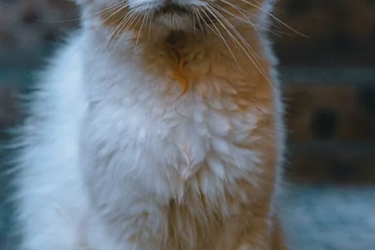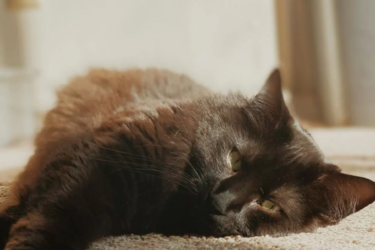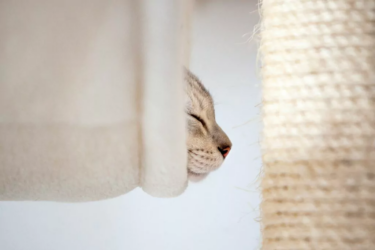
Faithful, social, and affectionate. And even though the Siberian cat is not hypoallergenic, anyone who has met this beautiful animal is in love! The Siberian cat is a true family cat, and we’re happy to tell you all about it here.
In this blog:
- The origin of the Siberian cat
- The personality of a Siberian cat
- The appearance and coat of a Siberian cat
- Siberian cat vs Norwegian Forest cat
- The health of a Siberian cat
- How long does a Siberian cat live?
- Taking care of a Siberian cat
- Is a Siberian cat hypoallergenic?
- Buying a Siberian cat (kitten)
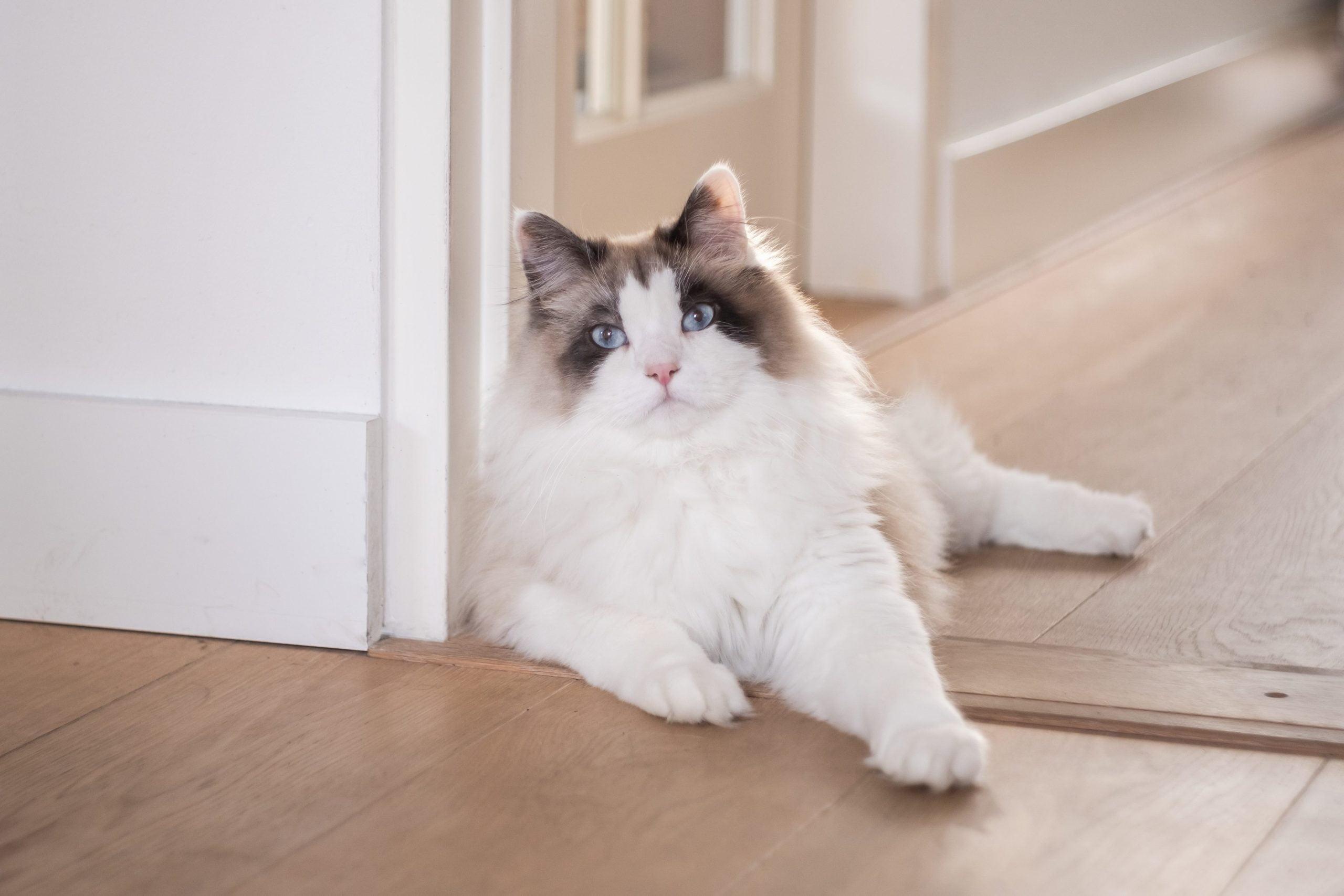
1. The Origin of the Siberian Cat
Not much is actually known about the origin and history of this beautiful cat. However, we do know that this breed has existed for more than a thousand years and is often mentioned in folk tales and Russian literature. This magical creature originally comes from Russia. The breed was already quite popular there, but it was only officially recognized by international breed associations in the 1990s due to strict export controls.
2. The Personality of the Siberian Cat
The Siberian cat is usually always cheerful and in a good mood. It is active, intelligent, and affectionate. These qualities make this cat especially suitable for life with a family and it also gets along well with other cats and dogs. It likes to be near its people, but never demands much attention. The mere presence of its owner is often enough to make the Siberian cat feel happy. The Siberian cat also loves to play, but preferably with intelligent toys – this breed gets very happy learning tricks or playing with interactive cat toys.
The Siberian cat has long back legs, making it an excellent climber that enjoys resting in high places and keeping an eye on its family. For this breed in particular, an extra high scratching post is essential.
These cat trees are ideal for large and heavy cat breeds!

Siberian cats love to talk to their owners and are crazy about water!
3. The Appearance and Coat of the Siberian Cat
Siberian cats are generally medium-sized. They resemble wild cats, but are a bit smaller. They reach full maturity around the age of five, and the males can weigh up to nine kilograms. The females weigh up to seven kilograms.
The body of the Siberian cat is muscular, strong, and fairly long. Their neck is short and sturdy. The legs are strong as well, but quite short. Their tail, on the other hand, is very long and well-furred, just like the ruff around their neck. The head of these cats is sweet and round, with large oval eyes that are set wide apart, and cute tufts of hair growing from their ears.
One of the most important features of a Siberian cat is its coat. It is designed to survive the harsh winters in Russia, so it is dense and very strong. It is also water-resistant.
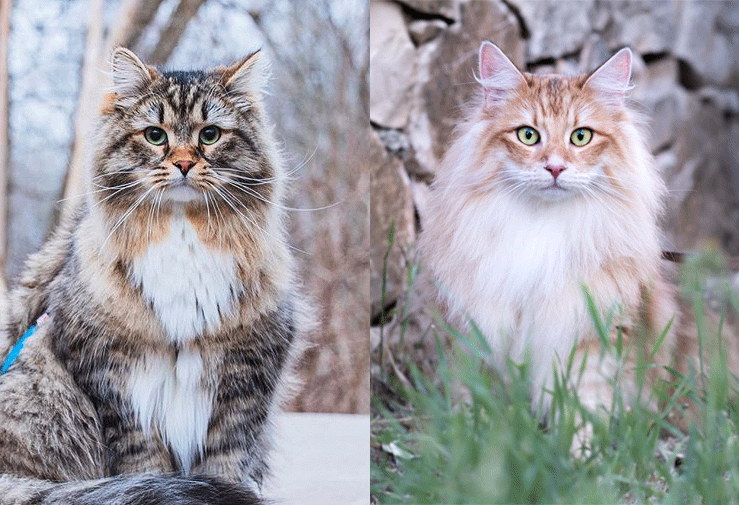
4. Siberian Cat vs Norwegian Forest Cat
The Siberian cat is often confused with the Norwegian Forest cat. This is understandable, as they do resemble each other a bit. However, there are clear differences between these two breeds:
- The Head: Siberian cats have a round head, while Norwegian Forest cats have a triangular one.
- The Ears: Both breeds often have lynx-like tufts at the tips of their ears, but the ears of Siberian cats are smaller and rounder.
- The Coat: Norwegian Forest cats have a double-layered coat, while the Siberian cat has a three-layered coat.
- Personality: Norwegian Forest cats are more independent, while Siberian cats appreciate the attention of their owners more.
5. The Health of a Siberian Cat
Purebred cats are bred for unique traits. The Siberian cat also has characteristics that make it special, such as:
- Medium-sized
- Muscular and strong body
- Very dense and water-resistant coat
Do you think a Siberian cat would be a good fit for you? Great, because luckily, a Siberian cat doesn’t have any characteristics that are unhealthy or harmful. If you want to be sure you’re getting a healthy cat, it’s best to ask a veterinarian for advice.
You can also consult the websites of Dier & Recht and the Dutch Food and Consumer Product Safety Authority for information about the breed’s health, whether it is permitted, and what rules apply to breeders.
Always buy a Siberian cat from a reliable breeder, preferably one who is a member of a breed association. That way, you can be sure that the cat is healthy and well cared for. Also, ask the breeder for a health certificate or guarantee for extra peace of mind.
6. How Long Does a Siberian Cat Live?
Siberian cats live as long as “regular” cats. You can expect twelve to sixteen years of companionship and joy. And if you’re lucky, they may live longer, as 25% of Siberian cats live beyond sixteen years.
7. Caring for the Siberian Cat
A Siberian cat has a thick and long coat, and it must be well cared for by brushing and combing it at least three times a week. A few play sessions per day with the owner are also appreciated.
A Siberian kitten also requires extra attention and care. Since these purebred cats grow a lot during their first two years of life, they need a lot of high-quality food. For advice on what food is best and how much to give, it’s best to consult your veterinarian.
Additionally, the care of this breed is the same as for any other cat:
- Love and genuine attention
- A safe home
- Fresh water bowls every day
- High-quality cat food
- Multiple clean litter boxes with high-quality litter
- A warm sleeping spot
- Plenty of (intelligent and interactive) cat toys
- A high cat tree with large sleeping areas
- Treatment for worms, ticks, and fleas
- Regular vet check-ups
- Vaccinations against diseases
Discover here what the cost of caring for a cat typically is
8. Is a Siberian Cat Hypoallergenic?
Let’s first discuss what “hypoallergenic” really means. It is often thought that hypoallergenic means you cannot be allergic to it. “Hypo” means low, so low allergens. Siberian cats are wrongly known for being non-allergenic—they are said to shed less because of a mutation that occurred during breeding. But this is a myth.
People are not allergic to a cat’s fur, but to the proteins in its saliva, urine, and skin flakes. Even though a Siberian cat produces fewer allergens, you can still be allergic to a Siberian cat. If you’re allergic to cats and would like a Siberian cat, it’s best to get tested by a doctor first or try spending a few days around a Siberian cat to see if you’re allergic.
9. Buying a Siberian Cat (Kitten)
Want to buy a Siberian cat? Go to a recognized breeder, preferably one who is part of a breed association. This way, you can be sure you’re getting a healthy, well-socialized cat that has been bred in a humane way. Always ask for the papers, a health certificate, and check the kitten’s parents. Also, take a look at the environment: is it clean and homely, and are the parents present? That’s a good sign. Never buy cats from platforms like Marktplaats, eBay, or from unscrupulous breeders.
A Siberian cat with pedigree from a good breeder costs an average of 1500 euros. If you’re looking for a cat but don’t necessarily need a purebred, consider checking animal shelters or adoption agencies. Many lovely cats are waiting for a good home.
And remember: you don’t have a cat for just a short while, but for the entire cat’s life. Are you ready to take good care of the animal and set aside money for its care and vet visits? Then the [breed name] could become your new best friend!
